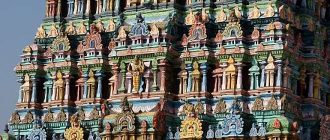Looking for some information on the religious history of Argentina? This article will run through the origins of religious beliefs in the past and also the present.
Without doubt Catholicism can be considered the first and most influential organised faith in the religious history of Argentina . The religion came over from Europe when the first voyages of discovery were made in 1502 with the voyage of Amerigo Vespucci. The Spanish navigator Juan Díaz de Solís visited the areas now known as Argentina in 1516. In 1536 the Spaniards founded a small settlement. The first permanent colony was actually on the site on modern day Buenos Aires in 1580 which at that time was part of the Viceroyalty of Peru.
Catholicism continued to hold power in Argentina up through the years until independence and following it too. Many natives were converted to the religion by missionaries and the general interaction with settlers. The Church went on to play a very important part in politics and law, traditionally with the two top leaders of country having to be Roman Catholic This however was diluted when changed were introduced to the Constitution in 1994. Although Catholicism is still the state religion, the constitution sets out to protect all religions. As stated in the 14th article, “All the inhabitants of the nation are entitled to the following rights: … to freely profess their cult…”. The 93rd article allows for the president and the vice-president taking office to swear their oath before Congress “respecting their religious beliefs”.
Today, according to a study conducted by Marita Carballo called “Cultural Values at the Turn of the Millennium” (1999), 78% of Argentinians call themselves Catholic. However, as a whole only 8% attend church more than once a week, and 16% only once a month; among avowed Catholics only 28% attend weekly services, and a quarter of them do not attend any.
With increased immigration to Argentina other religions also contributed to the melting pot. In Argentina’s religious history we begin to see people coming over from the Middle East, the Mediterranean, Europe and even further a field. Jews, Muslims, Russian Orthodox, Protestants and many other Christian denominations started practicing their faiths. Argentina now actually boasts the largest Muslim minority in Latin America with several mosques.
When looking at the religious history of Argentina one must also give space to the cults that exist within the country. These are usually animist faiths with roots in folklore, native practices or saint veneration.
One of the most famous cults is based upon veneration of La Difunta Correa (“The Deceased Correa”). Deolinda Correa was a woman whose husband fought in the civil war in 1840. She, along with her baby boy followed her husband’s battalion. While in San Juan, Correa suffered from starvation and thirst, and eventually died as a result. A group of soldiers found her body a few days afterwards, her son still alive and nursing from her breast. Because of this apparent miracle, people built shrines in her name in Vallecito, where she is buried. Her followers believe that Deolinda Correa has supernatural powers, and each year they make a pilgrimage to her grave, where they present gifts and plastic bottles of water to thank her for miracles that they believe she granted.




